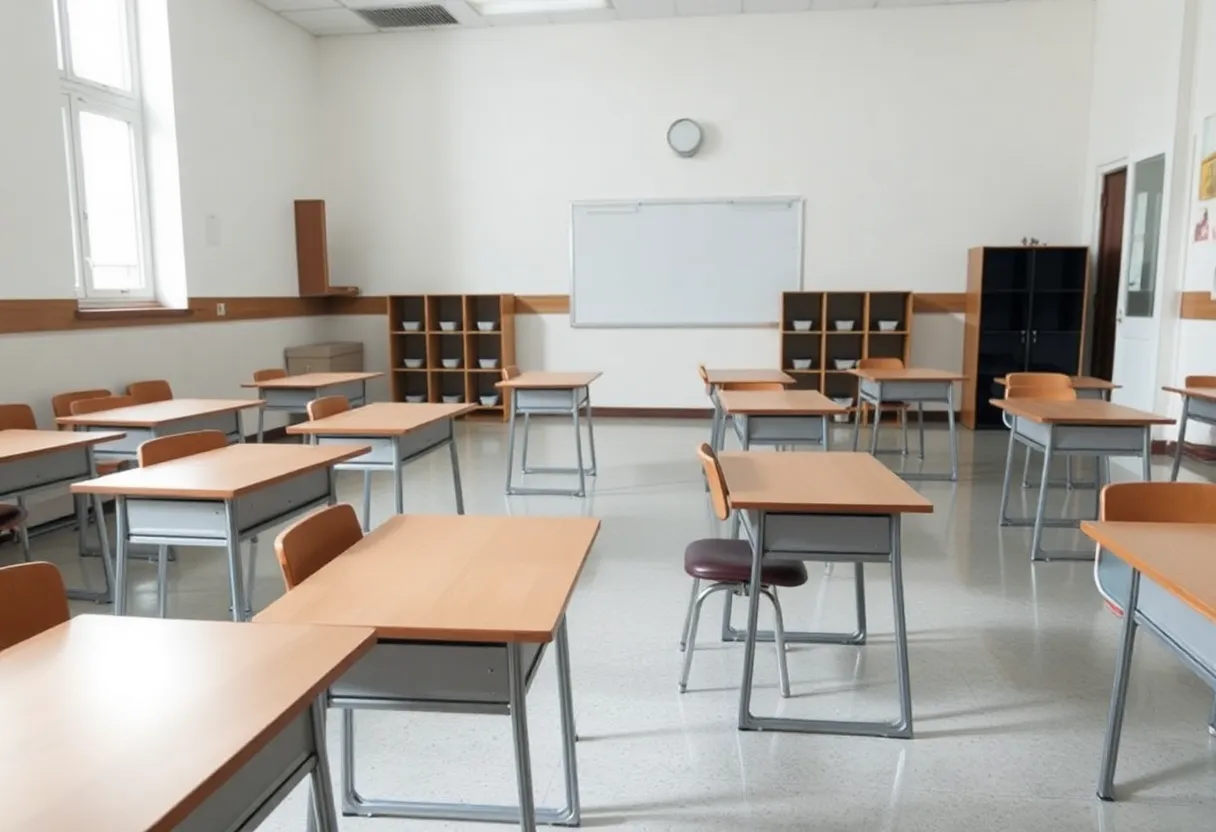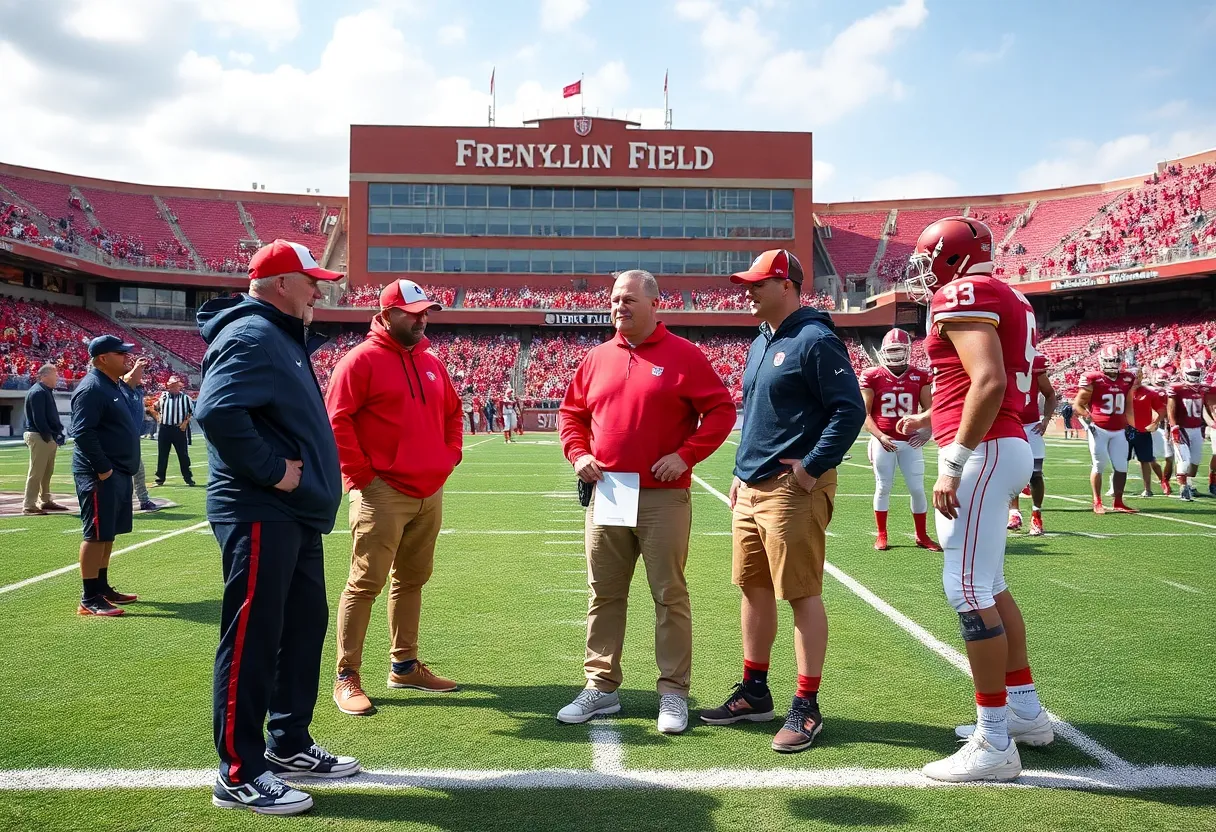Oxford, September 12, 2025
News Summary
Research from Oxford University’s Department of Statistics and the Leverhulme Center for Demographic Science examines the trade-offs of school closures during the COVID-19 pandemic. While preventing approximately 77,200 deaths, these closures led to significant long-term economic losses valued at about £1.6 trillion. The study highlights the importance of balancing health and educational outcomes, advocating for optimized non-pharmaceutical interventions to mitigate future crises effectively.
Oxford – New research conducted by Oxford University’s Department of Statistics and the Leverhulme Center for Demographic Science reveals that while school closures during the COVID-19 pandemic in the United States helped prevent a significant number of deaths, they also produced substantial long-term economic drawbacks. The study highlights that the closures resulted in approximately 77,200 averted COVID-19 deaths, while simultaneously inflicting an estimated £1.6 trillion ($2 trillion) in economic losses due to detrimental effects on education.
The study focused on various non-pharmaceutical interventions (NPIs) enacted across U.S. states during 2020, prior to vaccine availability. Researchers from Oxford and the University of Washington assessed the impact of eleven different NPIs by combining disease modeling with economic analysis. Findings indicated that school closures were effective in reducing transmission rates of the virus by 8.2%, but the educational costs were profound. Students experienced a loss of about 0.35 school-years of learning, with certain states maintaining school closures throughout nearly the entire academic year of 2020–2021.
In contrast, the research indicates that mask mandates proved to be more effective, yielding a 19% reduction in transmission rates while incurring minimal economic expense. Testing and contact tracing programs also emerged as efficient strategies relative to their implementation costs. Lead author Nicholas Irons noted that despite the unprecedented challenges posed by the pandemic, the policy response to control the virus was not optimal overall.
The study also explored the potential economic implications of a more strategic mix of interventions. It suggested that an optimal combination of NPIs could have lessened the total economic burden of the pandemic in the United States from £3.7 trillion ($4.6 trillion) to £1.5 trillion ($1.9 trillion) while saving over 100,000 additional lives. Co-author Adrian Raftery remarked on the necessity for improved national surveillance data within the U.S., akin to that employed in the UK during the pandemic, which could enhance response efforts in future health crises.
Overall, the findings provide essential insights for pandemic preparedness and response, emphasizing the need for a balance between health outcomes and economic stability. Researchers recommend rapidly deploying testing and contact tracing, implementing mask mandates, observing social distancing protocols, and undertaking targeted facility closures as effective strategies for managing future outbreaks.
The research paper is titled “Optimal pandemic control strategies and cost-effectiveness of COVID-19 non-pharmaceutical interventions in the United States” and is now available in BMC Global and Public Health.
FAQ
What was the primary focus of the study conducted by Oxford University?
The study focused on non-pharmaceutical interventions (NPIs) during the COVID-19 pandemic in the U.S., analyzing their economic impact and effectiveness in controlling the virus.
How many deaths were prevented due to school closures?
School closures during the pandemic resulted in the prevention of approximately 77,200 COVID-19 deaths.
What were the economic losses associated with school closures?
The estimated economic losses due to school closures were about £1.6 trillion ($2 trillion).
Which interventions proved to be the most effective in reducing transmission?
Mask mandates were notably effective, achieving a 19% reduction in transmission while incurring minimal economic costs.
What recommendations did the study make for future pandemic responses?
The study recommended strategies such as rapid testing, contact tracing, mask mandates, social distancing, and targeted facility closures for managing future outbreaks effectively.
Key Features of the Study
| Feature | Details |
|---|---|
| School Closures | Prevented roughly 77,200 deaths but incurred £1.6 trillion in economic losses. |
| Transmission Reduction | School closures reduced virus transmission rates by 8.2%. Mask mandates reduced transmission by 19%. |
| Learning Loss | Students lost approximately 0.35 years of learning during school closures. |
| Optimal Strategies | Combining interventions could have reduced economic impact from £3.7 trillion to £1.5 trillion and saved 100,000 additional lives. |
Deeper Dive: News & Info About This Topic
HERE Resources
Tragic Shooting Claims Life of Conservative Activist at University
Hudson School District Plans to Close Elementary Schools
Waukesha School Board Considers Closure of Elementary Schools
Evanston/Skokie District 65 School Board Discusses Potential Closures
Hudson School Board to Discuss Potential School Closures
Innovative Developments in Independent High Schools in Pennsylvania
UK Retail Sales Surge Amid ONS Data Issues
Evergreen Public Schools Closed Due to Ongoing Strike
Roxbury Elementary School Closed Due to Asbestos Concerns
Sound Christian Academy Announces Closure Ahead of School Year
Additional Resources
- Medical Xpress
- Wikipedia: COVID-19 pandemic
- Mira News
- Google Search: impact of school closures COVID-19
- New York Post
- Google Scholar: COVID-19 school closures
- The Hill
- Encyclopedia Britannica: Education
- New York Magazine
- Google News: COVID-19 school closures effects
Author: STAFF HERE PHILADELPHIA WRITER
The PHILADELPHIA STAFF WRITER represents the experienced team at HEREPhiladelphia.com, your go-to source for actionable local news and information in Philadelphia, Philadelphia County, and beyond. Specializing in "news you can use," we cover essential topics like product reviews for personal and business needs, local business directories, politics, real estate trends, neighborhood insights, and state news affecting the area—with deep expertise drawn from years of dedicated reporting and strong community input, including local press releases and business updates. We deliver top reporting on high-value events such as Mummers Parade, Philadelphia Flower Show, and Thanksgiving Day Parade. Our coverage extends to key organizations like the Greater Philadelphia Chamber of Commerce and United Way of Greater Philadelphia, plus leading businesses in telecommunications, food services, and healthcare that power the local economy such as Comcast, Aramark, and Children's Hospital of Philadelphia. As part of the broader HERE network, we provide comprehensive, credible insights into Pennsylvania's dynamic landscape.





